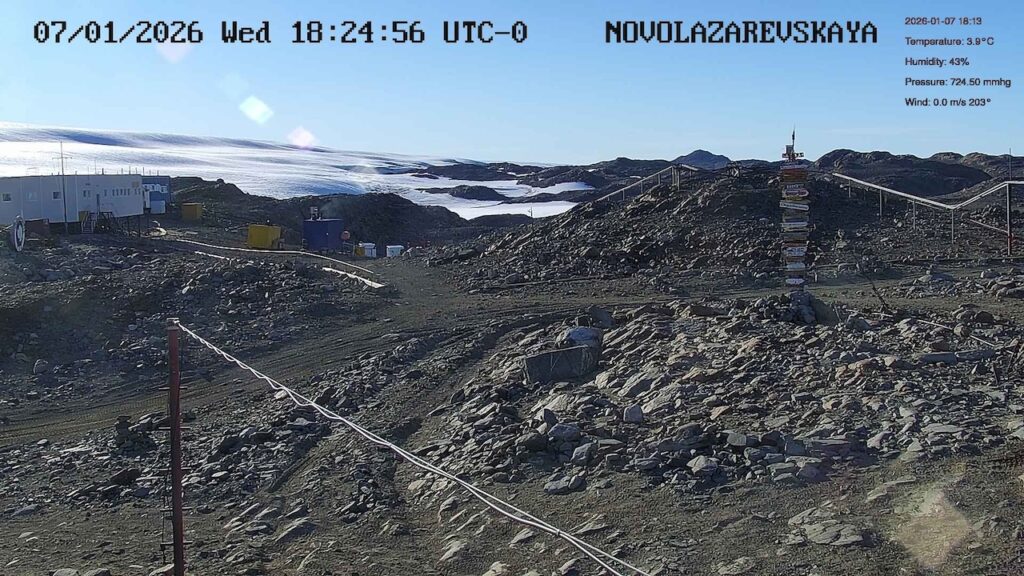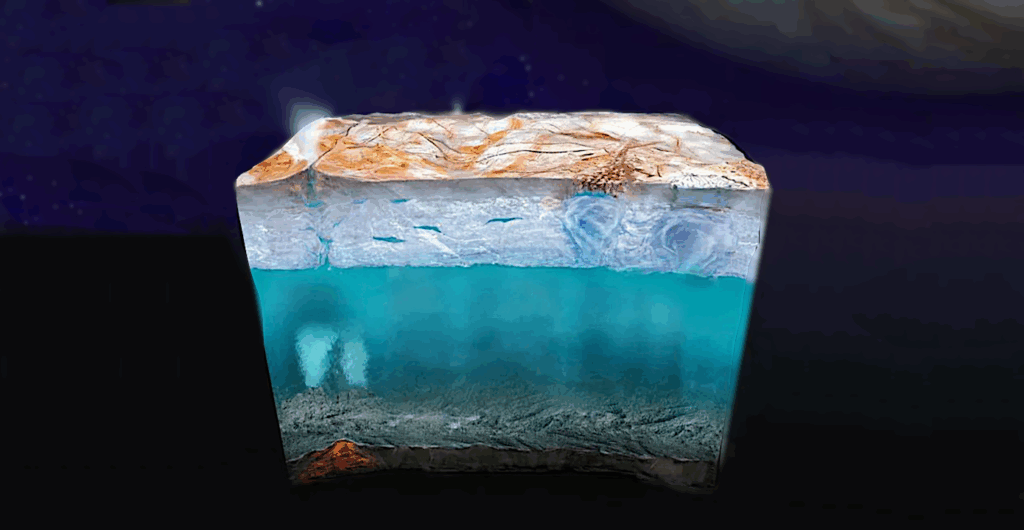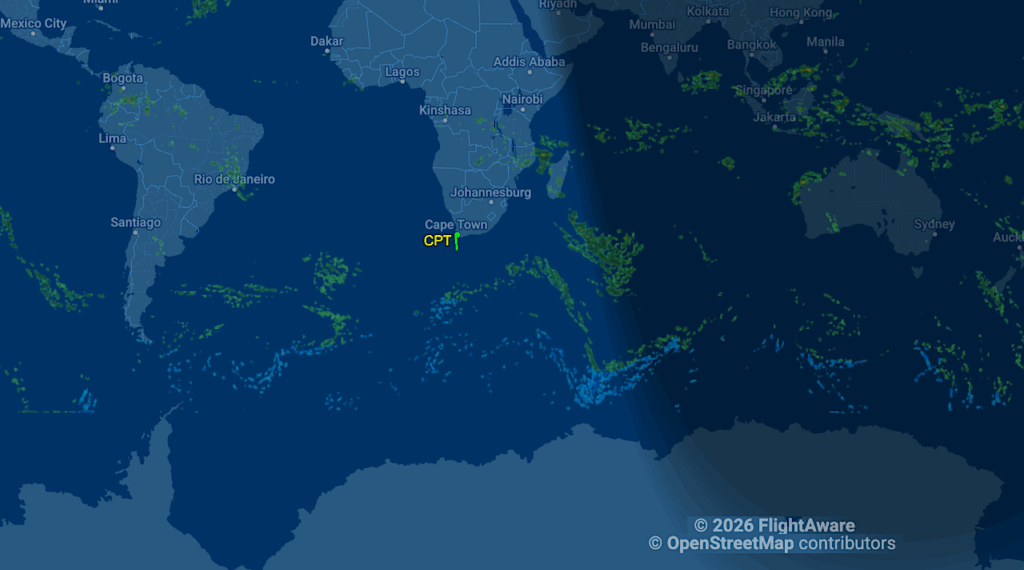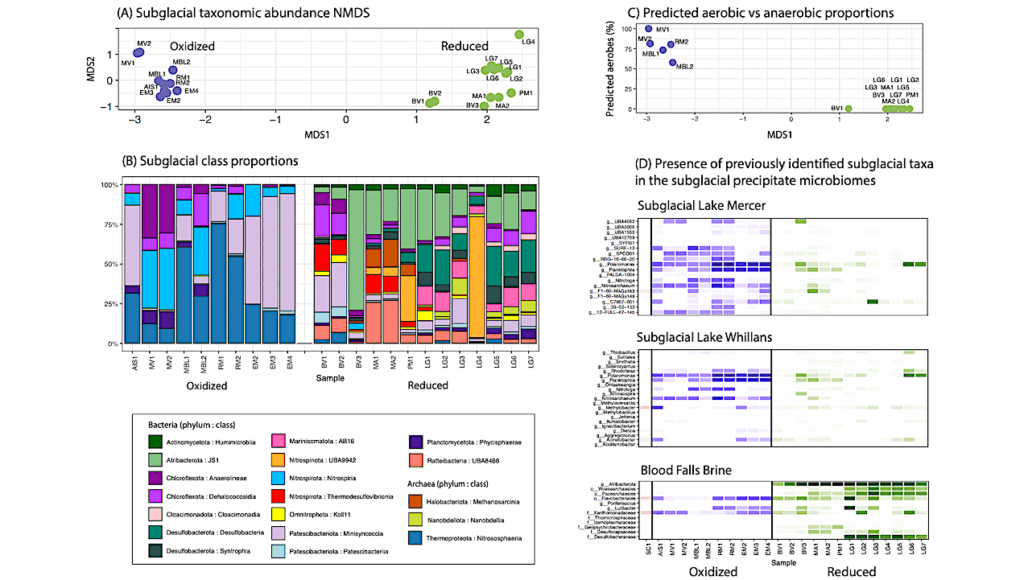Ice World Update: How Earth’s Record Breaking Intense Heat Wave Impacted Life In Antarctica
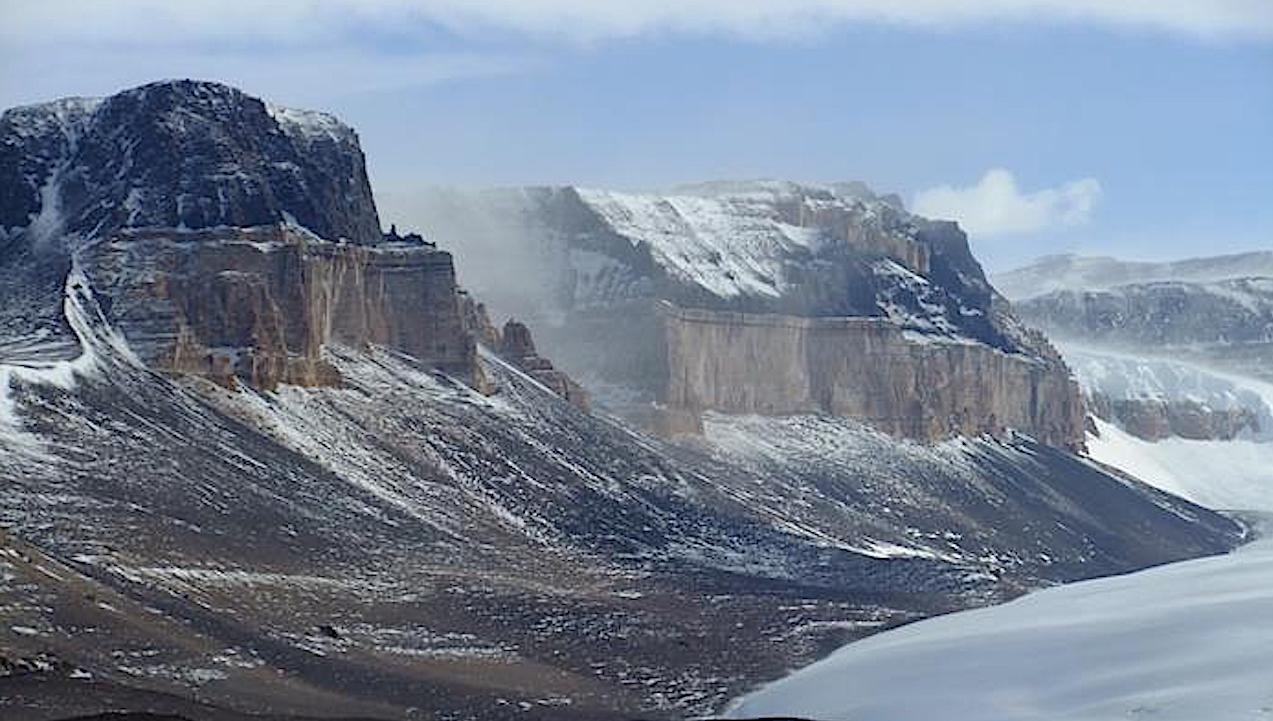
Summer 2024 is on track to be the hottest on record for hundreds of cities across the U.S. and globe. Even in Antarctica, during the peak of its winter, extreme heat pushed temperatures in parts of the continent more than 50°F above the July normal.
In a study published on July 31 in the journal Earth’s Future, scientists, including researchers at the University of Colorado Boulder, revealed how heat waves, especially those occurring in Antarctica’s cold seasons, may impact the animals living there. The research illustrates how extreme weather events intensified by climate change could have profound implications for the continent’s fragile ecosystems.
In March 2022, the most intense heat wave ever recorded on Earth hit Antarctica, just as organisms in the southern region braced themselves for the long, harsh winter ahead. The extreme weather raised temperatures in parts of Antarctica to more than 70°F above average, melting glaciers and snow even in the McMurdo Dry Valleys, one of the planet’s coldest and driest regions.
As part of a Long-Term Ecological Research (LTER) project in Antarctica, the research team found that the unexpected melt followed by a rapid refreeze likely disrupted the life cycles of many organisms and killed a large swath of some invertebrates in the McMurdo Dry Valleys.
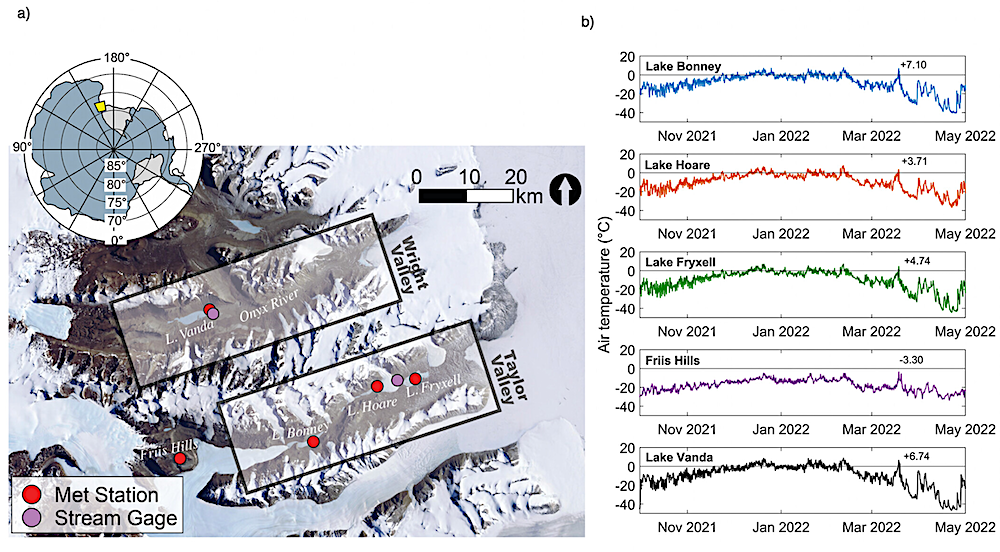
(a) Map of the McMurdo Dry Valleys, Antarctica and (b) the location of meteorological stations where air temperature was recorded at Lake Bonney, Lake Hoare, Lake Fryxell, the Friis Hills, and Lake Vanda — Earth’s Future
“It’s important that we pay attention to these signals, even if they’re coming from microscopic organisms in soils in a polar desert,” said Michael Gooseff, the paper’s senior author and professor in the Department of Civil, Environment and Architectural Engineering at CU Boulder. “They’re the early responders to changes that could cascade up to larger organisms, the landscape and even us, far away from Antarctica.”
When Gooseff arrived in Antarctica in November 2021, the continent looked much like it had for the past two decades. As a fellow of the Institute of Arctic and Alpine Research (INSTAAR), Gooseff has led the LTER at the McMurdo Dry Valleys, a National Science Foundation-funded project, for the past decade. Nearly every Antarctic summer, he travels to the southern region to study its ecosystem and how organisms survive in extreme environmental conditions.
While most animals can’t tolerate the region’s dryness and cold, some microbes and invertebrates, including roundworms and water bears, thrive in this frozen desert. Water bears, or tardigrades, are tiny, eight-legged animals measuring 0.002 to 0.05 inches long. They can survive extreme conditions— as cold as -328°F and as hot as 300 °F —that would kill most other forms of life.
In 2022, all members of the polar expedition team left the continent in February, before the Antarctic summer ended. A month later, Antarctica experienced the most extreme heat wave on record, driven by an intense storm known as an atmospheric river, which transported moist air over long distances to the polar region.
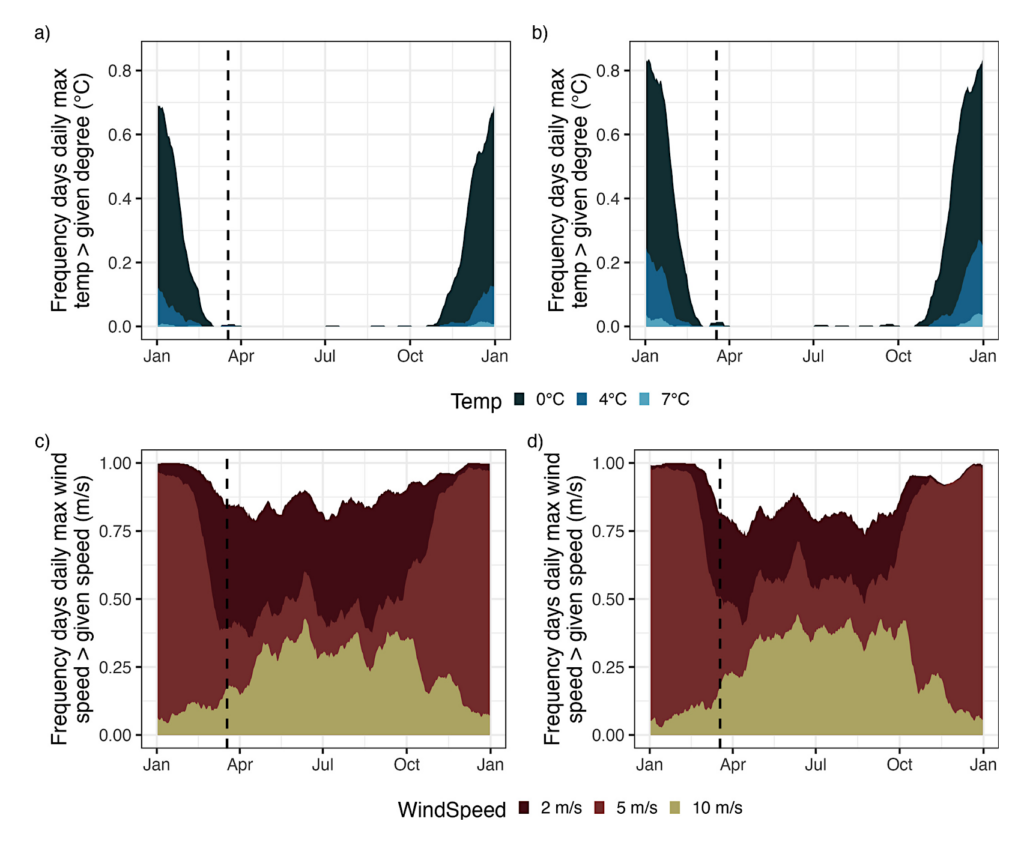
Frequency of daily maximum air temperature exceeding 0, 4, and 7°C during a given 2-week window at (a) Lake Fryxell and (b) Lake Bonney meteorological stations from 1994 to 2022. Frequency of daily maximum wind speed exceeding 2, 5, and 10 m/s during a given 2-week window at (c) Lake Fryxell and (d) Lake Bonney meteorological stations from 1994 to 2022. Dashed line indicates 18 March. — Earth’s Future
The team’s sensors in the McMurdo Dry Valleys recorded air temperatures, which typically hover around -4°F in March, rising above freezing and exceeding the average by 45°F.
Satellite imagery and stream discharge measurements showed that the sudden warming wetted the valleys’ soil more than two months after the peak summer thaw, at a time when the land is typically dry.
In two days, after the heat wave passed, temperatures plummeted and the soil froze. This event happened during a critical transition period, when organisms hunker down and get ready for the dark, cold winter. Gooseff and his colleagues were curious about how animals in the valleys responded.
“These animals invest a significant amount of energy in preparing and shutting down for the winter,” said Gooseff. “When things start to warm up the following summer, they use energy to become active again. One of our major concerns with unusual weather events like this heat wave is that these animals might start using a lot more energy, thinking it’s summer, only to have to shut down again two days later. How many times can they go through that cycle before they exhaust their energy reserves?”
He and the team returned to Antarctica the following summer, in December 2022. They sampled the soil and compared organisms living in areas that became wet to those that stayed dry during the heat wave.
They observed a 50% decrease in the population of Scottnema, a common roundworm, in areas that got wet. Scottnema is adapted to extremely cold and dry climates.
“The heat wave made the environment appear warm enough for things to get wet, creating a false start to summer. Some of the biology responding to these temperatures might be seriously disrupted by this,” Gooseff said.
Rapid swings between extremes in weather can disproportionately impact sensitive species like Scottnema, but they may have far less impact on other animals, such as tardigrades. These creatures have a higher tolerance for moisture, allowing them to proliferate as the environment becomes wetter.
“Changes in which species are in the soil and how big the populations are can have a major impact on the ecosystem’s food web and nutrient cycling,” Gooseff said.
Previous research has shown Scottnema is responsible for about 10% of the carbon processed in the Dry Valleys’ soil ecosystem.
As climate change exacerbates extreme weather events in Antarctica, larger species are also being impacted. For example, in the summer of 2013, an unusual rainfall event along the Adélie Coast of East Antarctica killed all Adélie penguin chicks in the region. In July, temperatures in parts of East Antarctica climbed up to 50 °F above the usual winter average.
Gooseff and his team plan to continue documenting extreme weather events and their impacts on the Antarctic ecosystem.
What happens in Antarctica doesn’t stay in Antarctica, Gooseff said.
“The loss of ice shelves has pretty dramatic impacts on the mass balance of our oceans, and it affects us even thousands of miles away.”
Response of a Terrestrial Polar Ecosystem to the March 2022 Antarctic Weather Anomaly, Earth’s Future (open access)
Astrobiology


